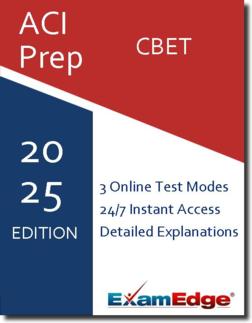ACI CBET (CBET) Practice Tests & Test Prep by Exam Edge - Topics
Based on 28 Reviews
- Real Exam Simulation: Timed questions and matching content build comfort for your ACI CBET test day.
- Instant, 24/7 Access: Web-based ACI Certified Biomedical Equipment Technician practice exams with no software needed.
- Clear Explanations: Step-by-step answers and explanations for your ACI exam to strengthen understanding.
- Boosted Confidence: Reduces anxiety and improves test-taking skills to ace your ACI Certified Biomedical Equipment Technician (CBET).

Understanding the exact breakdown of the ACI Certified Biomedical Equipment Technician test will help you know what to expect and how to most effectively prepare. The ACI Certified Biomedical Equipment Technician has multiple-choice questions The exam will be broken down into the sections below:
| ACI Certified Biomedical Equipment Technician Exam Blueprint | ||
|---|---|---|
| Domain Name | % | Number of Questions |
| Anatomy & Physiology | 12% | 12 |
| Public (employee, patient, visitor) Safety in the Healthcare Facility | 10% | 10 |
| Fundamentals of Electricity & Electronics | 14% | 14 |
| Healthcare Technology and Function | 25% | 25 |
| Healthcare Technology Problem Solving | 25% | 25 |
| Healthcare Information Technology | 14% | 14 |


